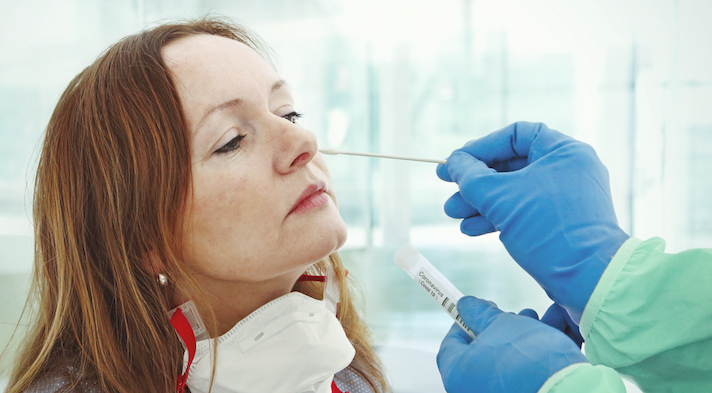Two types of tests are commonly used to diagnose current infection of SARS-CoV-2, the coronavirus that causes COVID-19.
The first type, which has been used as the default since the early stages of the pandemic, is the PCR test or molecular test, with PCR standing for a laboratory technique called polymerase chain reaction. These tests work by detecting the genetic code (RNA) of the virus. A swab is used to collect a specimen from the back of the throat and nostril, which is then sent to a lab to be processed. PCR tests provide highly accurate results and are considered the most sensitive for detecting an active infection, but test results do take about two days.

The second type of Covid test is an antigen test, which diagnoses COVID-19 by searching for molecules found on the surface of the SARS-CoV-2 virus. The antigen test commonly used in the UK is known as a lateral flow test, or rapid test.
How does the rapid Covid test work?
Similar to the PCR test, a lateral flow or ‘rapid’ test involves a swab being inserted into the nose or throat. The sample is then inserted into a tube containing extraction fluid, which extracts the molecule that determines if COVID-19 is present. A drop of this mixture is placed in a well on a handheld device, which draws the liquid in and along a strip of test paper. If coronavirus proteins (antigens) are detected, a red line will appear, alongside a second line that indicates the test is working.
The lateral flow test uses the same technology as a pregnancy test but instead of looking for certain hormones, the test contains antibodies that bind to coronavirus proteins. Results can be provided in as little as 15 minutes and are easy to interpret, with the device showing two lines if it is positive, one line on the top if it is negative or one line on the bottom if the test is invalid.
How accurate is the rapid Covid test?
Though antigen tests are not quite as accurate as PCR tests, they are effective at identifying people with high viral loads who are most infectious and most likely to transmit the virus to others, making them a useful tool in the effort to reduce transmission. Analysis of community testing data shows that lateral flow tests have a specificity of at least 99.9%, which means fewer than one false positive in every 1,000 tests carried out. The accuracy of lateral flow tests depends on several factors, including the concentration of virus in the specimen, time from onset of infection, the make of the test used and who is conducting the test.
Data has shown that rapid tests are more accurate in the hands of medical professionals or scientists than self-trained members of the public, but performance
improves with experience and regular use is encouraged to accurately detect cases of COVID-19 in the community. It’s important to remember that even when carrying out regular tests, people should continue to regularly wash their hands and follow any additional government guidelines in place such as social distancing and the wearing of face coverings.
What are the benefits of the rapid Covid test?
The lateral flow test is fast, practical and easy to interpret. These test kits are less expensive than molecular tests and do not require laboratory analysis, allowing users to take a test quickly at home. The rapid Covid test has also been used across schools, universities, in workplaces and before test events in the UK to limit the spread of the virus. Although these tests are not as accurate as the PCR test, having access to results within minutes rather than days has been invaluable across a range of settings.